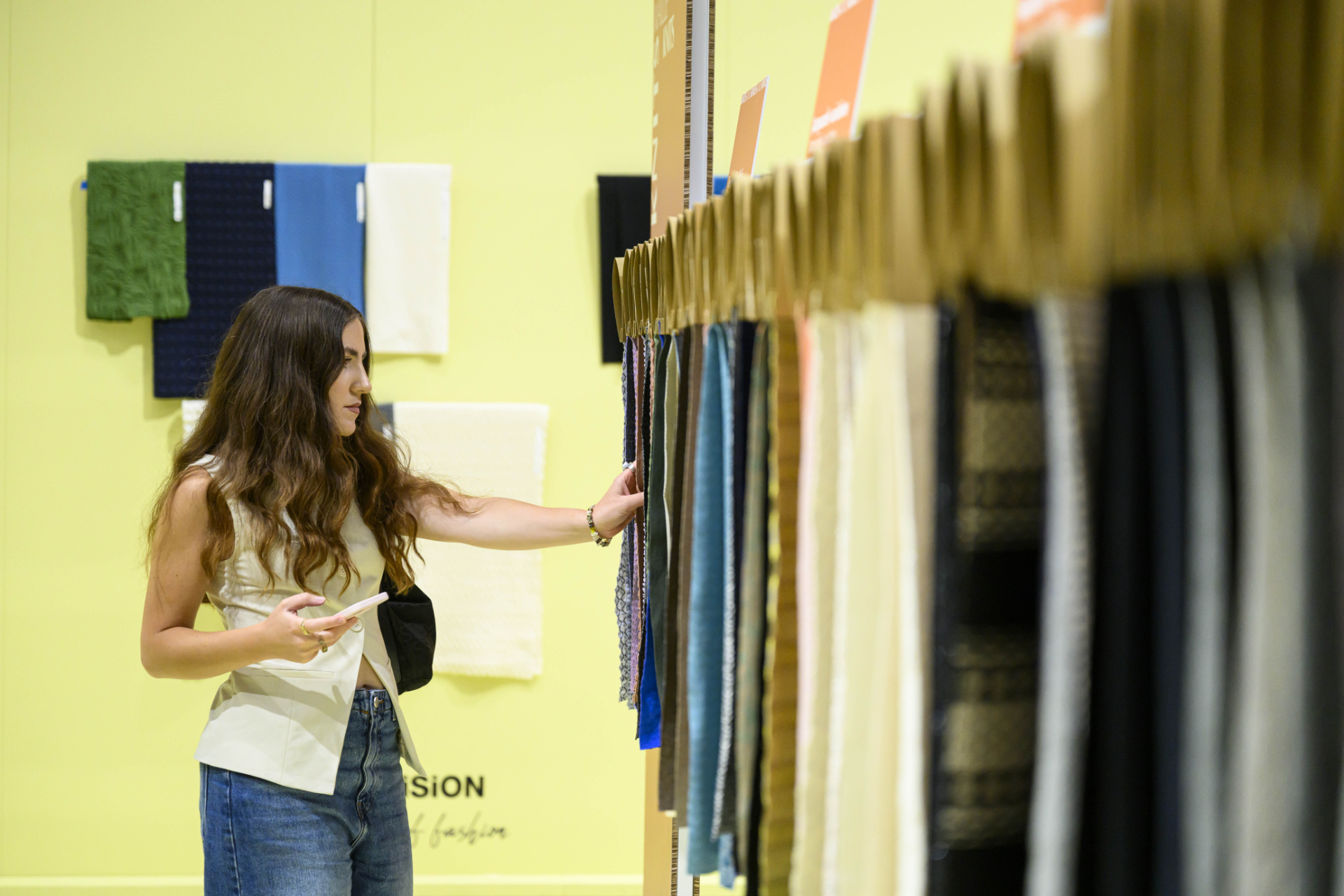Key Takeaways:
- According to industry figures speaking at one of fashion’s major events, technology remains a tool to empower fashion professionals – not replace them. From data-led planning, design and development, to consumer experiences, circularity, and 3D, human instinct and intuition will coexist with, and complement innovations in software, hardware, data modelling, and material science.
- A systemic change is underway at every level in the supply chain, where investment in textile-to-textile recycling, traceability, environmental and social impact quantification will need to be met by communication, collaboration, and co-creation between both in-house communities and partnerships – both empowered by objective, actionable insights.
- AI has the potential to be a transformative force in fashion, with both established technology companies and new startups and scale-ups targeting both the design community – with generative tools – and the wider product creation and brand ecosystem. Challenges remain in culture, copyright, and change management, but we are set to see even deeper digital transformation in the near future.
The link between technology and fashion has never been stronger: from the decades-long legacy of software to the cutting edge of the material science and biotech revolutions, and now the age of AI. And the role technology plays today covers everything from efficiency and creativity gains, to levers to pull that can potentially reduce fashion’s global environmental impact.
At Première Vision Paris, which took place this season between 2-4th of July, the latest innovations in fabric, leather and accessories, the dedicated Smart Creation area, and the multiple talks and pitches organised were all marked by this intertwining of technology and fashion. As I experienced first-hand, wherever you turned at Première Vision Paris (hereafter “PV Paris”) this show, technology and innovation were on display – as an essential element for suppliers, brands, retailers to remain competitive in time of peak environmental, sociological and geopolitical uncertainty.
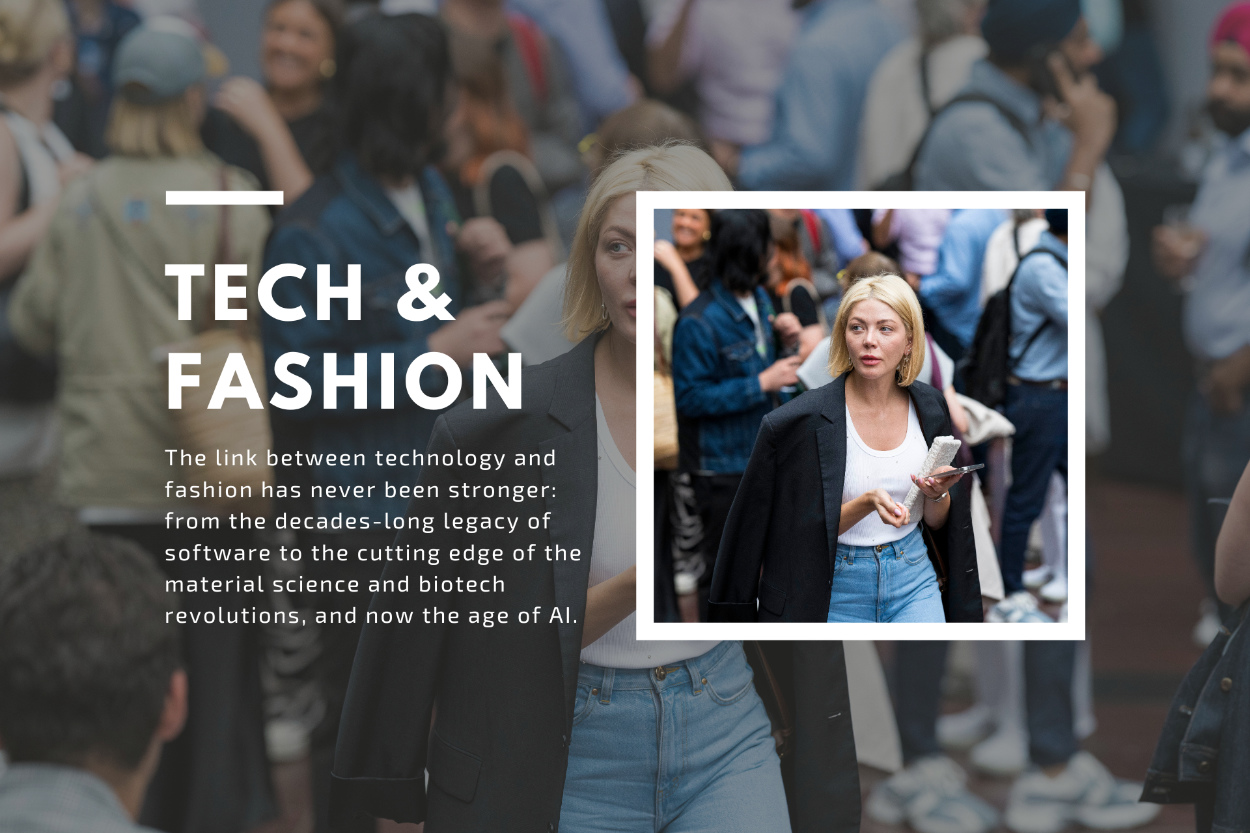
Against that backdrop, the message was clear: agility and resilience will be key to the industry’s ability to thrive. And as this season’s show demonstrated, this is where technology will be indispensable – provided it is supported by the right mindset, with data being broken out of silos, and cooperation and collaboration between stakeholders being guaranteed.
As we have for four seasons, The Interline hosted four tech-focused panel discussions at PV Paris for the autumn / winter 2025/26 season – all of which included guidance on how to navigate these currents. Concentrated into a full afternoon of strategic discussions, the tech talks (hosted and moderated by Ben Hanson) covered four major areas: the relationship between data science and better trend forecasting, benchmarking and planning; how the mandate and the mechanisms for traceability across the extended lifecycle of products are evolving; the ways that 3D tools, workflows, and assets are capturing new consumers at the same time as improving efficiency and reducing waste by changing the way the industry designs and develops; and finally the future of AI and its potentials and pitfalls for the fashion ecosystem.
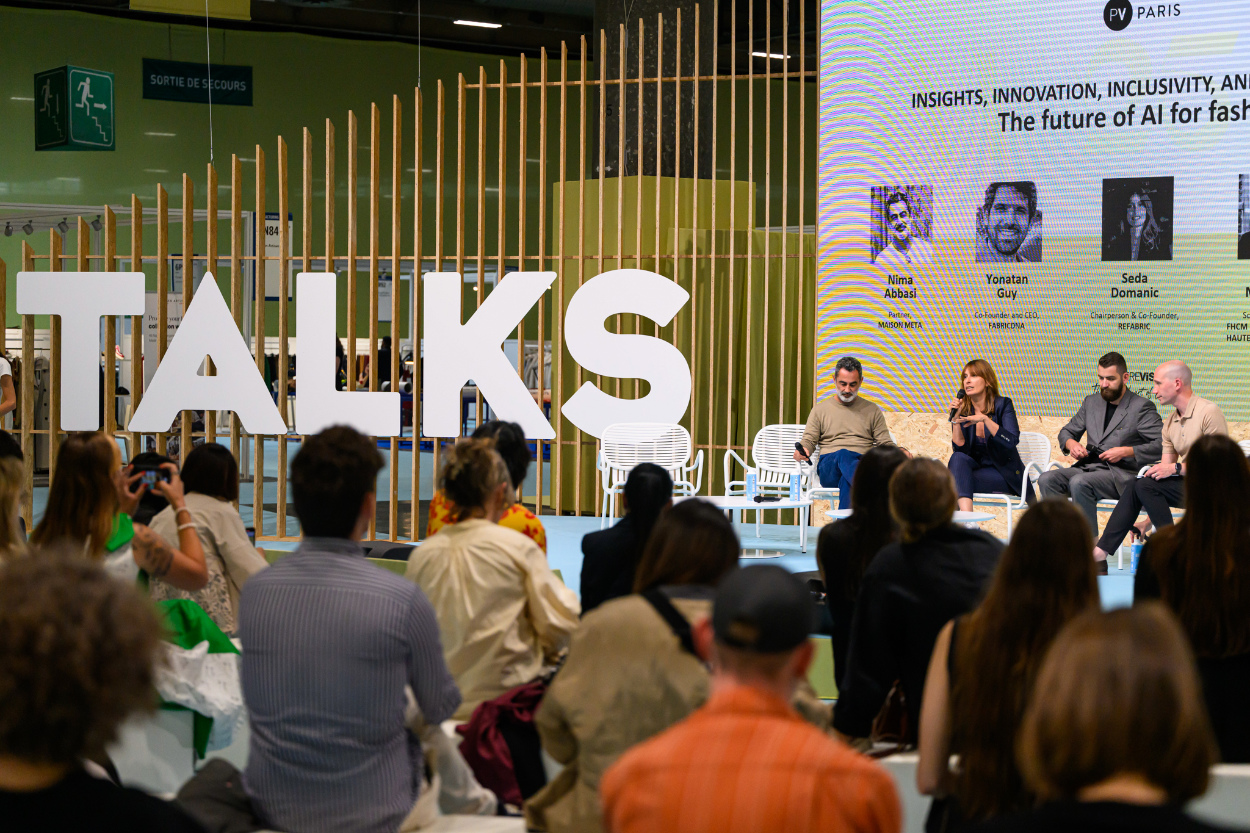
I attended all four panels, as well as exploring the rest of the show, and from the way visitors, exhibitors, and presenters were engaging, it was clear that, just as much as they were looking for new trends, materials, and creative directions, everyone was also seeking new innovations and new ideas to help them – and the wider industry – tackle the challenges that are shaping their day-to-day lives.
And the first talk certainly set a high bar for the strategic scope of the discussions, and how closely they were going to align with the audience’s appetite for change, focusing on how technology is transforming trends, and the way products are conceived, with data-backed science supporting decision making and serving as a lever to help avoid overproduction.
In the time I’ve spent immersed in industry, I have seen fashion very much as an applied art. The essence of fashion lies in the union of creation and business, and therefore the increasing reliance on data-based forecasting can, for some in the design community, lead to questioning the place of intuition and creativity.
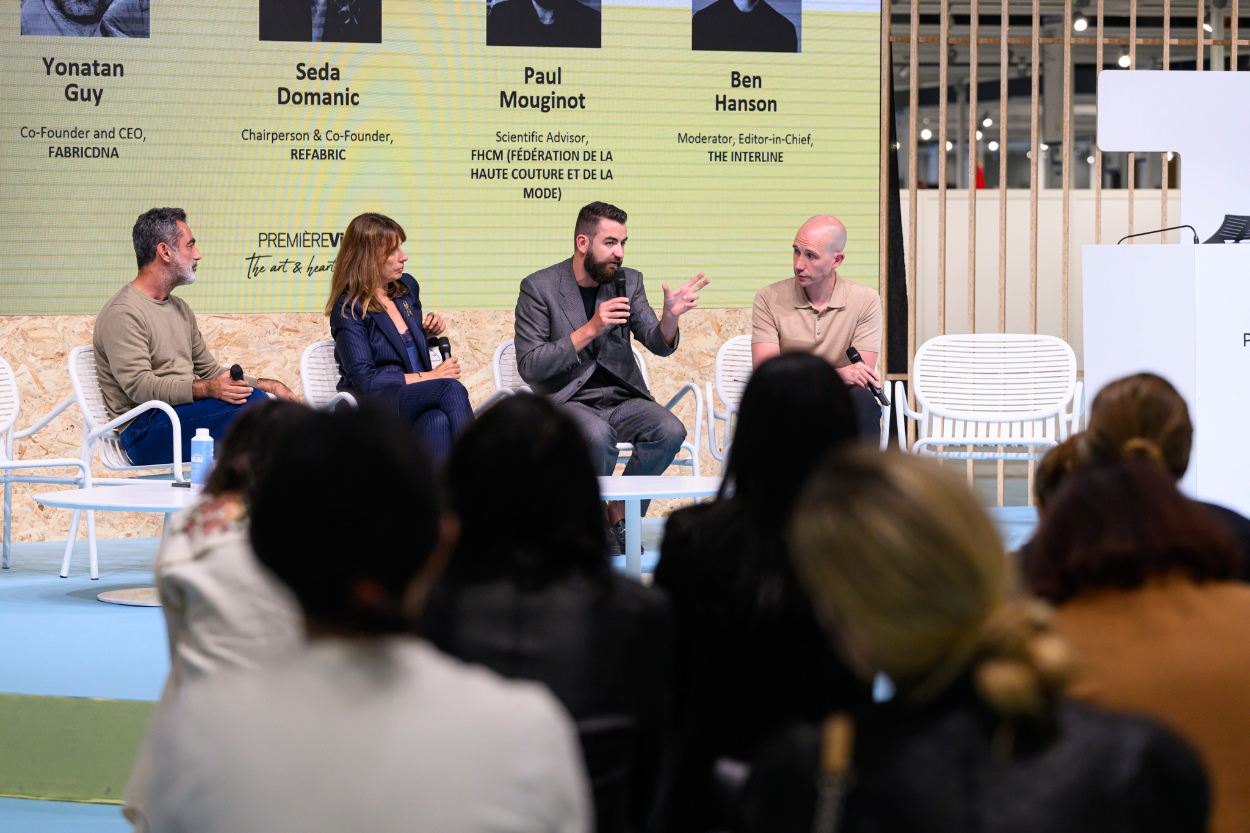
For this reason, it was interesting to see the panel members being by talking about how a delicate balance between art and science can be struck – at the same time as underlining the fact that this is a digital transformation that is destined to happen.
“Traditionally, creativity has been defined as the ability to produce ideas that are, to some extent, both original and useful.(…)The associative theory of creativity assumes that creative ideas result from making connections between weakly related concepts to form novel ideas.”
And this was exactly what Julie Pont from Heuritech was stressing: AI, which is becoming a prominent force in forecasting and competitive analysis, will essentially help to “find the signal among the noise”at a speed and scale that human beings are incapable of managing. But the fashion industry also needs to recognise that, however strongly the landscape has shifted, human involvement and human intuition still – at least for the time being – is likely to outperform AI in what researchers call “creative divergent” tasks.
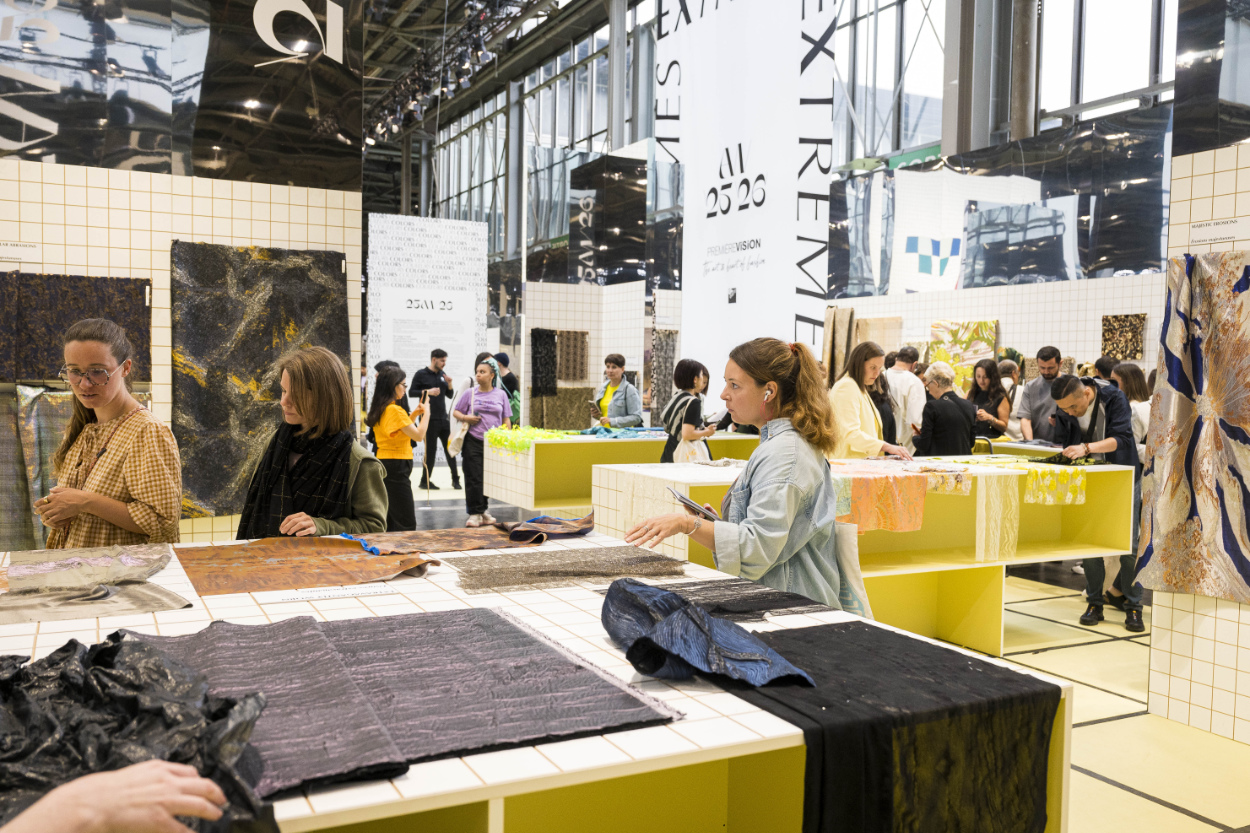
Speaking on-stage, Julie Pont also charted the way trend forecasting as a discipline has changed – shifting from a top-down, fashion show dictated line, through a bottom-up, streetstyle, community influenced one, to the current landscape of real-time, fast evolving micro trends and communities, that are global and local at the same time, highly numerous, and impossible to keep tabs on as a human.
Being capable of instantly drawing a visual analysis of all these influences, data (and especially machine learning applied on top of that data) essentially gives the designers not just validation of their ideas, but a real power, to define and decipher small signals just as easily as big long-term trends, from all over the world, including their penetration rate in the industry, and therefore empowers them in their decision. But, based on the panellists’ perspectives and my own experience, it will remain in the hands of creatives to have the guts, to go with the flow, or not, depending on their intuition and their brand’s identity.
Or to put it another way: bringing more data into forecasting, trend, and planning does not mean making it prescriptive; new insights will provide creative teams with reliable insights into the market, but sometimes the right decision might be not to follow them.
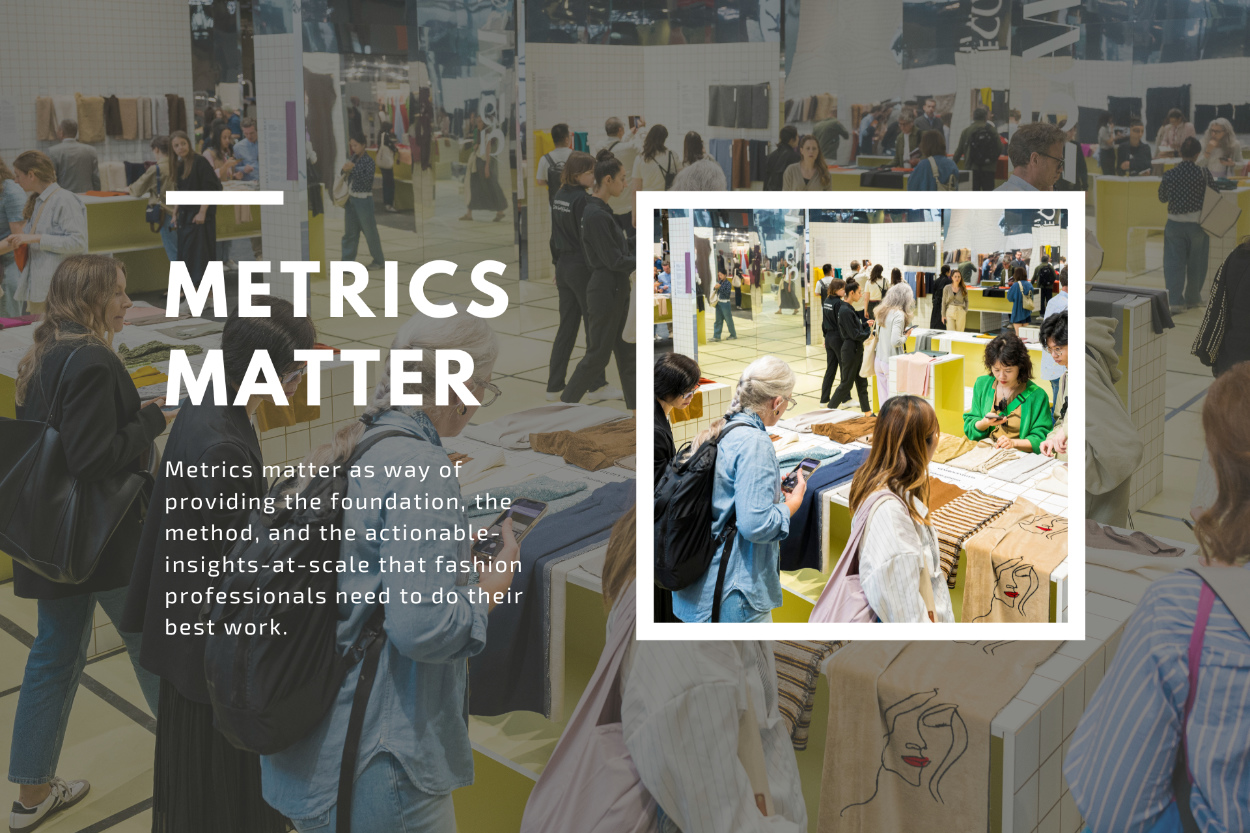
And this has implications for a key question that was put to Julie Evans from Sustalytics about where and why fashion professionals fear technology, since this idea that more data and better platforms will do professionals’ jobs for them has been a persistent one. Julie’s answer surely resonates with this, with her reminding the audience that the most successful fashion professionals will be the ones who adopt technology for its potential early, but who remain aware of their own role in curating and governing its output.
As Julie put it, we should ”not be waiting for the majority before jumping in”. Because fashion, by its definition as a culture-leading industry, should be made up of the innovators and early adoptors, and not the late majority. Julie also drew a strong parallel between new tools and historic transformations, pointing out that Generative AI will likely become a way to find new creativity, to augment our work, to create a new era, just as it was for painting with the emergence of photography in the early 19th century.
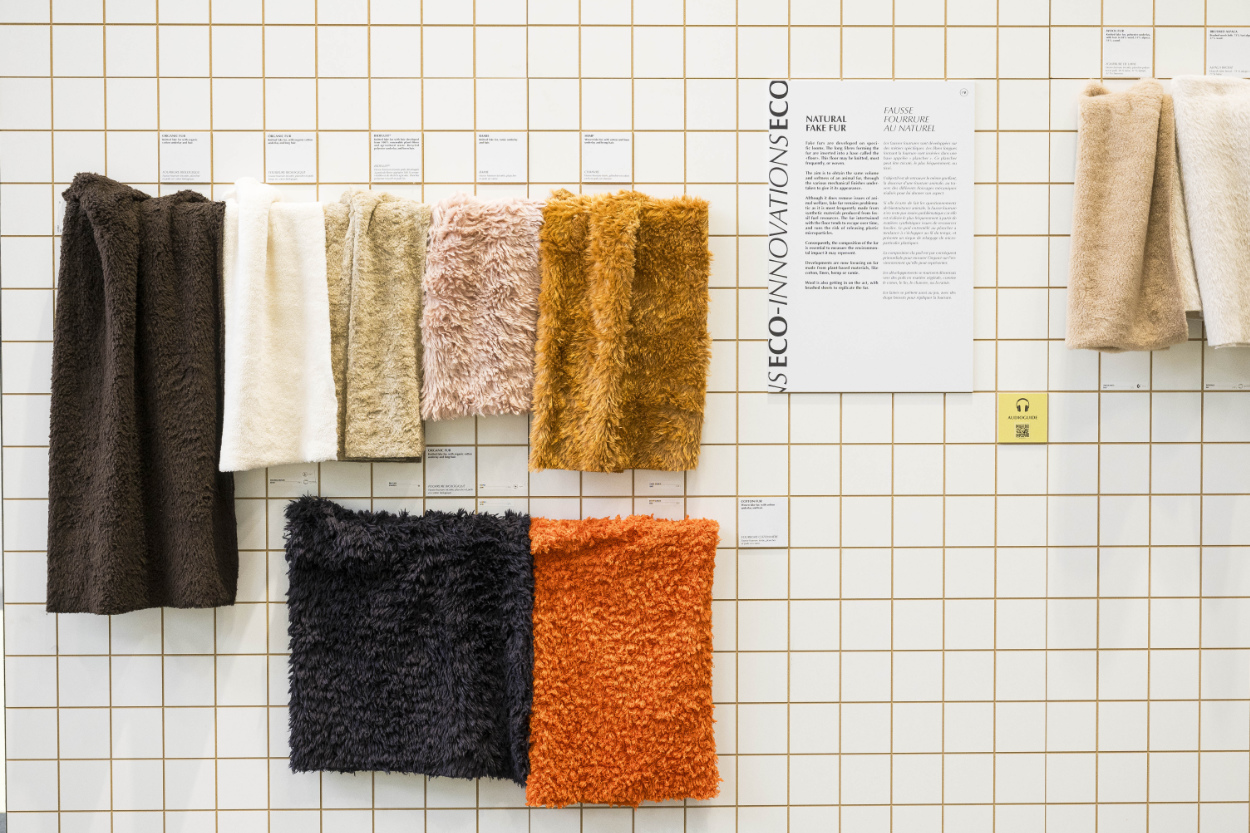
Yet, for sure, metrics matter as way of providing the foundation, the method, and the actionable-insights-at-scale that fashion professionals need to do their best work. And most designers, working from intuition and instinct alone, do not know what the rest of the market is doing, underlined François Gonnot from Lectra (whose Retviews platform provides data-backed competitive benchmarking and insights). Thanks to the data-powered competitive analysis, precise benchmarking and strategic planning made possible by that category of tools, designers can not just make the most informed choice on what to bring to market for price, positioning, trend, and competition reasons, but they can also work towards building sustainable product assortments. Across his answers, François Gonnot showed how the 3 major objectives of a solid, long-term sustainability strategy can be addressed by data science: from the integration of customer requirements, the management of environmental and social risks, to the ability to compete and sell.
The big elephant in the room, of course, remains overproduction. And as fashion has continued to chase new, fleeting, opportunities, the idea of ’trend’ itself has become questionable, and creative and commercial teams have turned to technology to provide a framework for a new way of working. But as several speakers reminded us, technology is only part of the picture, and the shift from traditional trend to a new, real-time-response model will only happen with good change management when designers are trained in the implementation of those tools and frameworks in their daily, collaborative work.These designers will use metrics to objectively quantify their decisions, certainly, but they will be supported in the transition to those tools, and will earn recognition for how they use them because they are fundamentally aware of the issues of fashion, and have gained deep raw material knowledge, and are therefore able to blend creativity with technology, data and an intimate understanding of sustainable methods.
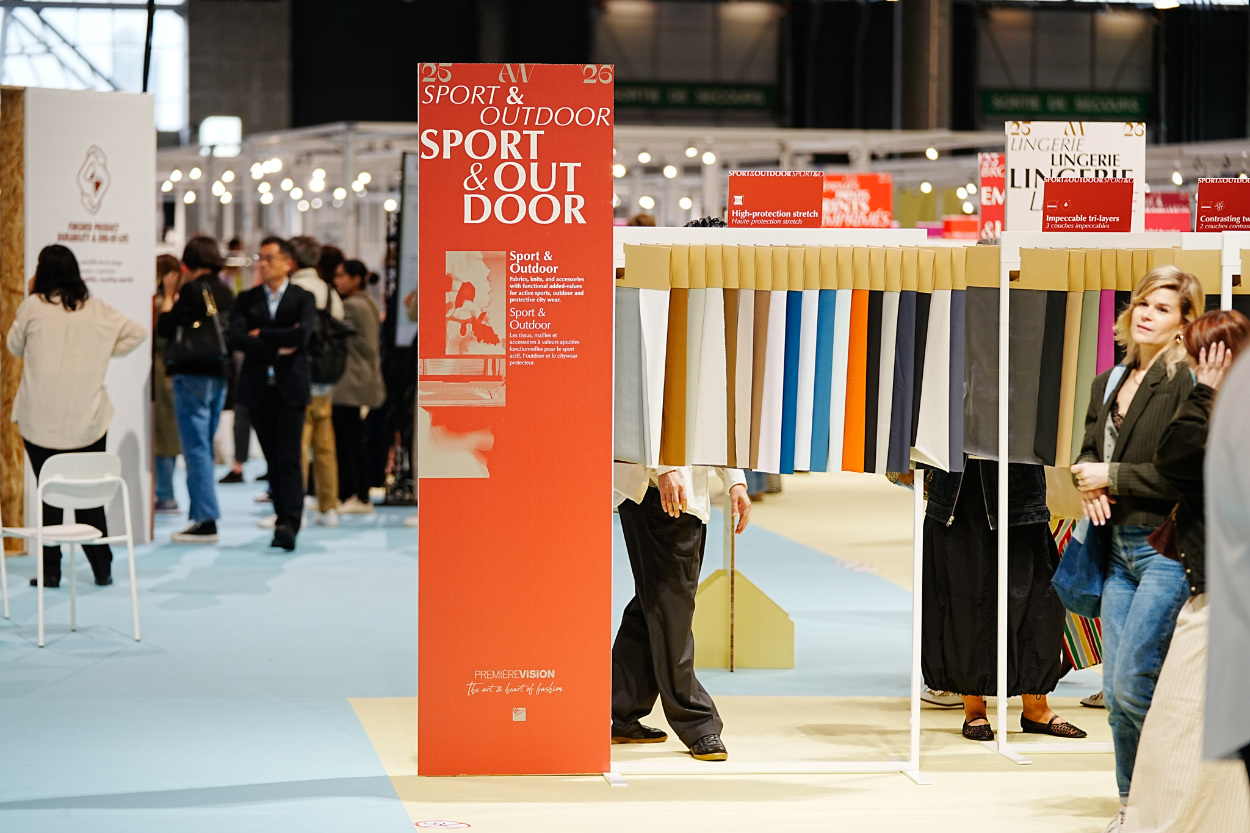
And scientific methods were also in the spotlight in the second technology talk, which spotlighted the importance of data, impact modelling, and traceability, up and downstream, from raw materials to the garment, and from the garment to its end of life including wearing, washing, repairing, post-sale businesses and services. As the speakers for that panel underlined, the method of measuring and managing the impact of a garment’s extended lifespan can be supported by technology solutions, data corresponding to key metrics, and insights provided by platforms that span the supply chain – fuelling sustainable decision-making for brands and customers.
One common thread through all the speakers’ perspectives was the unavoidability of sustainable, circular business models. From a strong economic outlook for sustainable, traceable products in Europe, to the regulatory requirement for due diligence, brands have no choice anymore but to address the challenge. But beyond compliance, once one understands that the choices made in creating, selling, and using fashion have a huge environmental and humanitarian impact, the same data, processes, and solutions can provide a unique opportunity to build trust and loyalty with consumers.
Like Anna Rönngard from TextileGenesis said during this talk, traceability is about the authentication of sustainable claims, and as brands are increasingly required to make and substantiate those claims, the mechanisms required to deliver that traceability (which are a central pillar of TextileGenesis’s tools) are becoming vital parts of the brand toolkit. As important as traceability at the raw material and fibre level is, this talk also reminded us that, beyond the authentication of materials, traceability is about shedding light and visibility on a complex and fragmented supply chain – as well as about recognising that meeting compliance targets is just the beginning. As Louise Lenglart from Clear Fashion explained, having visibility into a wide spectrum of upstream data provides an opportunity for brands to both comply with regulations and, then, to begin to define their own environmental and social strategies. And a key part of this strategic planning, she explained, will rest on companies’ willingness to simply capture, aggregate, and begin learning from data – even if the conclusions that data reveals are not perfect, and leave room for improvement.
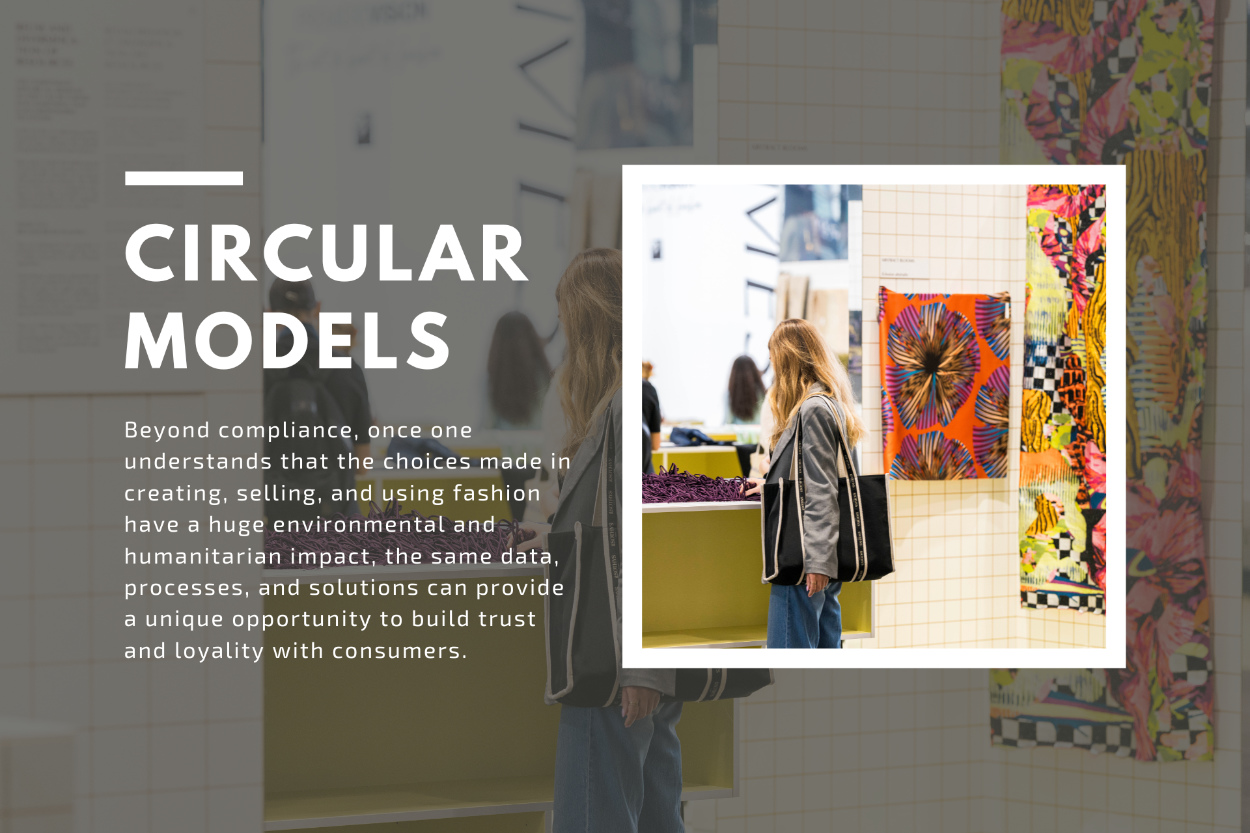
Behind traceability, of course, is data – which is not only crucial for calculating and reporting carbon, water, energy use and waste management, but tools like Vaayu, as explained by their Head Of Product & Customer Experience, Marie Samba, during the talk, use these to scale and speed up the LCA process in order to give brands, retailers, suppliers, and shoppers the right insights to build strategies to reduce all these.
And when we think about the full extent of the product lifecycle (which extends from upstream sourcing through to product use, resale, repair, and recycling), we also see a key role for technology to play in helping brands, retailers, and consumers better understand both the scale of the challenge and the size of the business opportunity. Both were demonstrated on-stage by Save your Wardrobe, whose goal is ”to support local repairs, with digital tools, to help [repair and service providers to] preserve their crafts, (…) and for the whole linear system to switch to a fully skilled circular one”, as Co-Founder Hasna Kourda explained.
There is, clearly, a huge amount to think about when it comes to tracing and controlling the extended product lifecycle, which makes it critical for brands to understand not just the landscape of legislation, but their own vision for what being a ‘good brand’ entails.
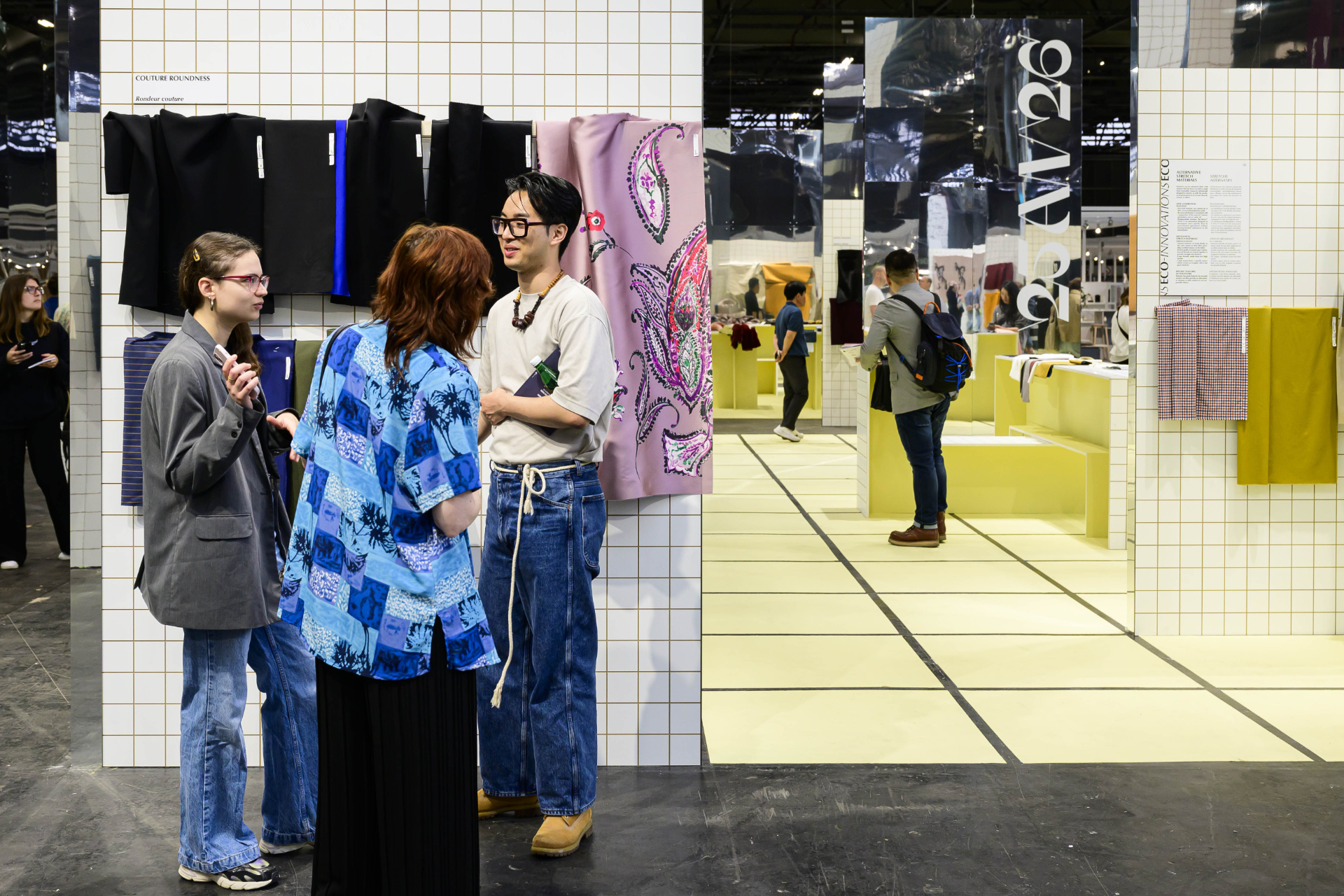
“What is your North star?” asked Sebastien Barillot from Whysebird, stressing the importance, alongside regulation and proactive action, of cultural, corporate transformation to drive a positive change. With the will of true co- creation – more than simple collaboration, not just imposing the rules to the stakeholders,- the skill of actually accomplishing meaningful action on sustainability lies, Sebastien told us, in mutually listening to, and learning from, each other’s expertise.
And as he added, the key really lies in onboarding all the different stakeholders that make up the extended fashion value chain, by bringing awareness throughout the whole supply chain, setting common goals and building up the strategy together, with Sebastien saying that “We [all] need to have the same agenda”.
When organisations are able to build that alignment – supported by the right insights and the right solutions – authenticity will automatically make its way through to the final customer, with no need for fake storytelling. With the right data underneath, after all, the story is already written.
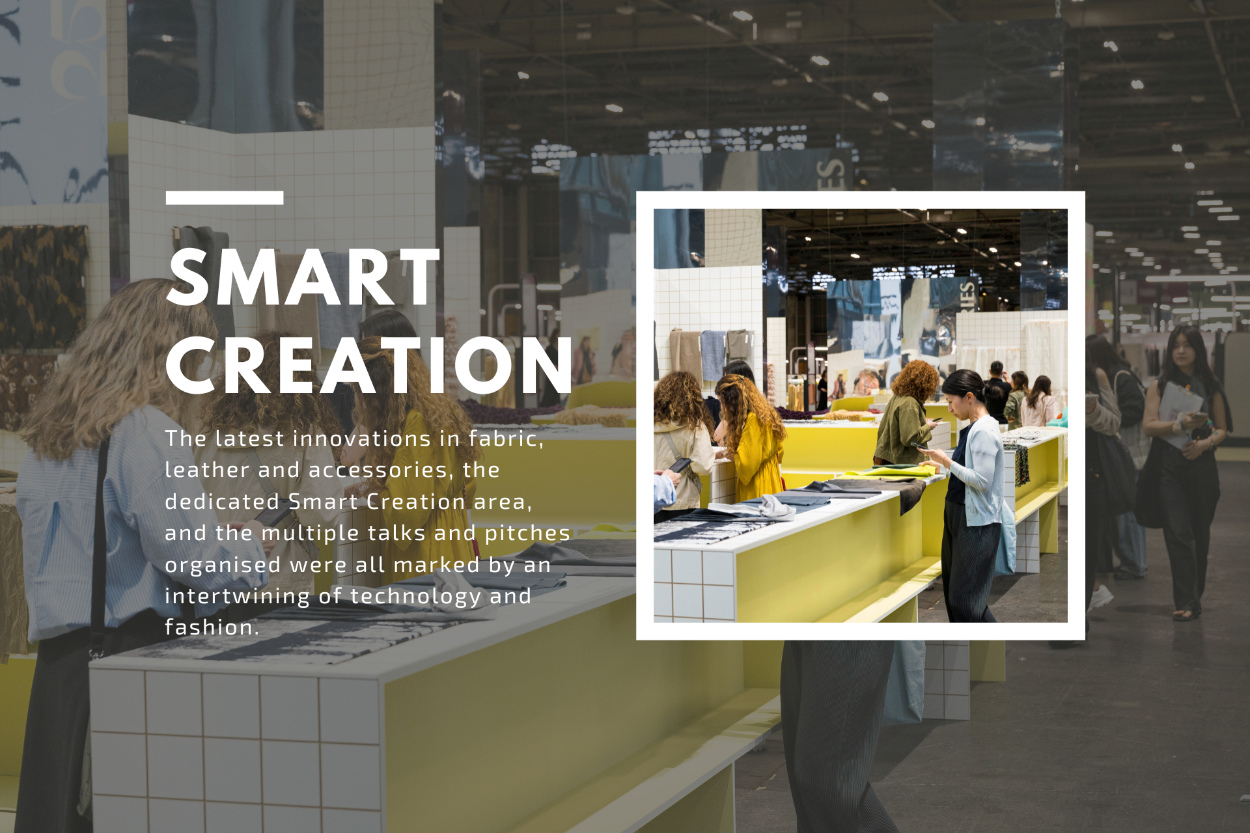
Speaking of stories: in fashion these are being told more often in a captivating way thanks to 3D, creating novel ways to engage consumers through immersive experiences that transcend the lines that have traditionally been drawn between different apps, platforms, and services, and that bring products to life wherever the consumer finds themselves. Cosmic Shelter, part of the LVMH Maison des Startups is a “creative studio and microverse maker,” building immersive website-based 3D experiences designed to amplify the brand experience and renew the customer journey. On-stage in the third of the tech talks The Interline hosted, Robin Caudwell explained how websites / browsers remain the common thread for online experiences, giving brands a universal target to aim for in creating 3D environments and populating them with optimised, compelling, lightweight 3D assets.
Robin was also joined on-stage by Alexandre Nguyen, from the French office of CLO Virtual Fashion – one of the leading 3D design and simulation technology companies. And as the two explained, together, the same 3D assets that can be used to create immersive, engaging web experiences have their roots in design and development workflows, where uptake of 3D is being driven by its ability to bring creative and commercial teams closer to their vision – from form and function to the fine details of materials.
Following the hype wave that defined the “metaverse” era, creating digital twins of garments, footwear, and accessories could be seen as primarily a marketing activity, but as both Robin and Alexandre reminded us, in reality it is all about prototyping in a smarter, quicker, multi-department connected way, in order not to replace the final garment but to provide a reliable reference point for communication and to avoid waste.
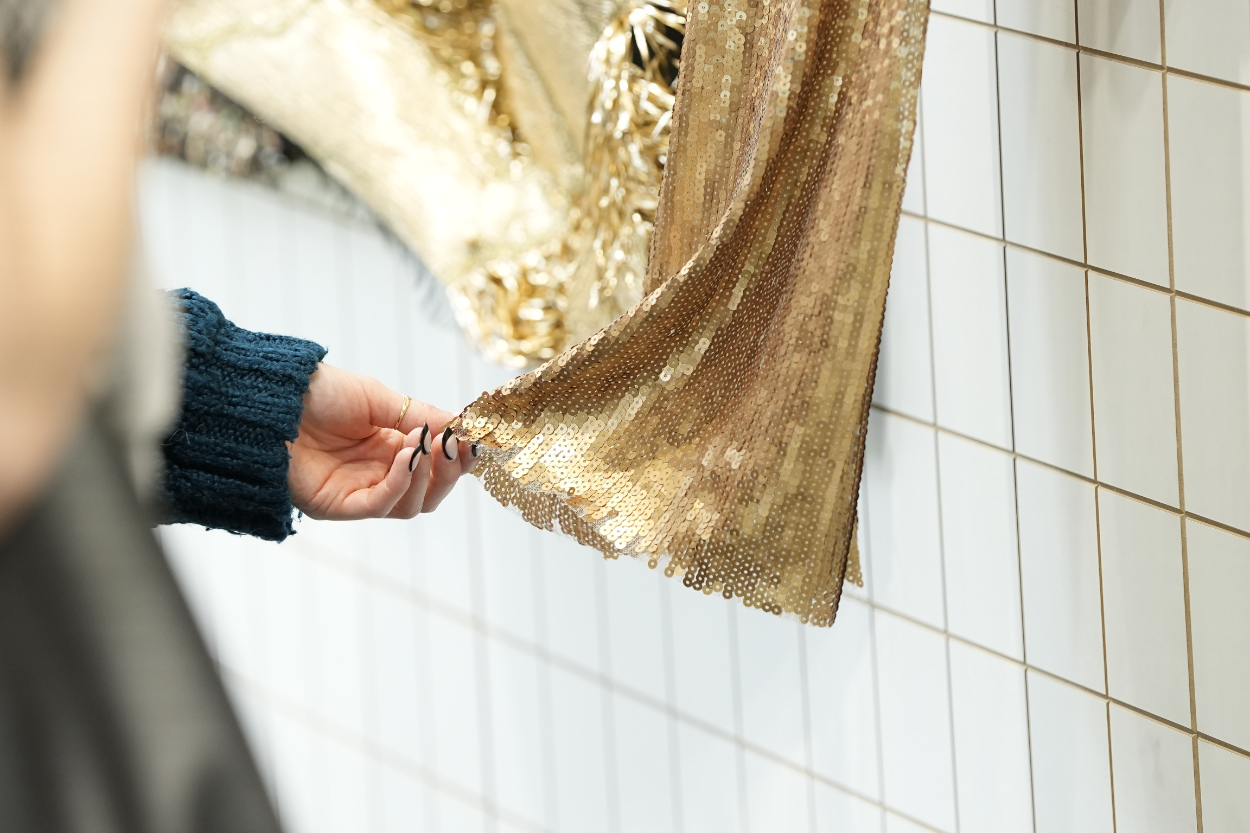
And just as the future of 3D web experiences is bright, with Cosmic Shelter working on immersive experiences for multiple LVMH maisons as part of the group’s partnership with the upcoming Paris Olympics, the outlook is also positive for a new generation of fashion professionals who are ‘3D native,’ or who understand the relevance and the power of 3D. These future professionals are, as both Robin and Alexandre explained, set to be the audience that recognises the real, extended value of flexible, interoperable 3D for every type of usage, from production, fit, performance testing, and sourcing, to marketing, e-commerce and retail experiences.
Which brings us to generative AI – a class of technologies that, more than any other, has allowed many people in fashion to experiment with creativity in new ways, and to shorten the distance between having an idea and seeing it realised. Based on a show of hands in the audience, and from my own experience – and the experiences of The Interline’s team – most people have now experimented with using AI to generate text, ideas, images, or even music and video.
Every one of us has, to some extent, tried putting on the magician’s robe, so to speak, to either create something new or, in many cases, to attempt to automate away some part of the laborious, monotonous, tasks that have come to define so much of our digital time.
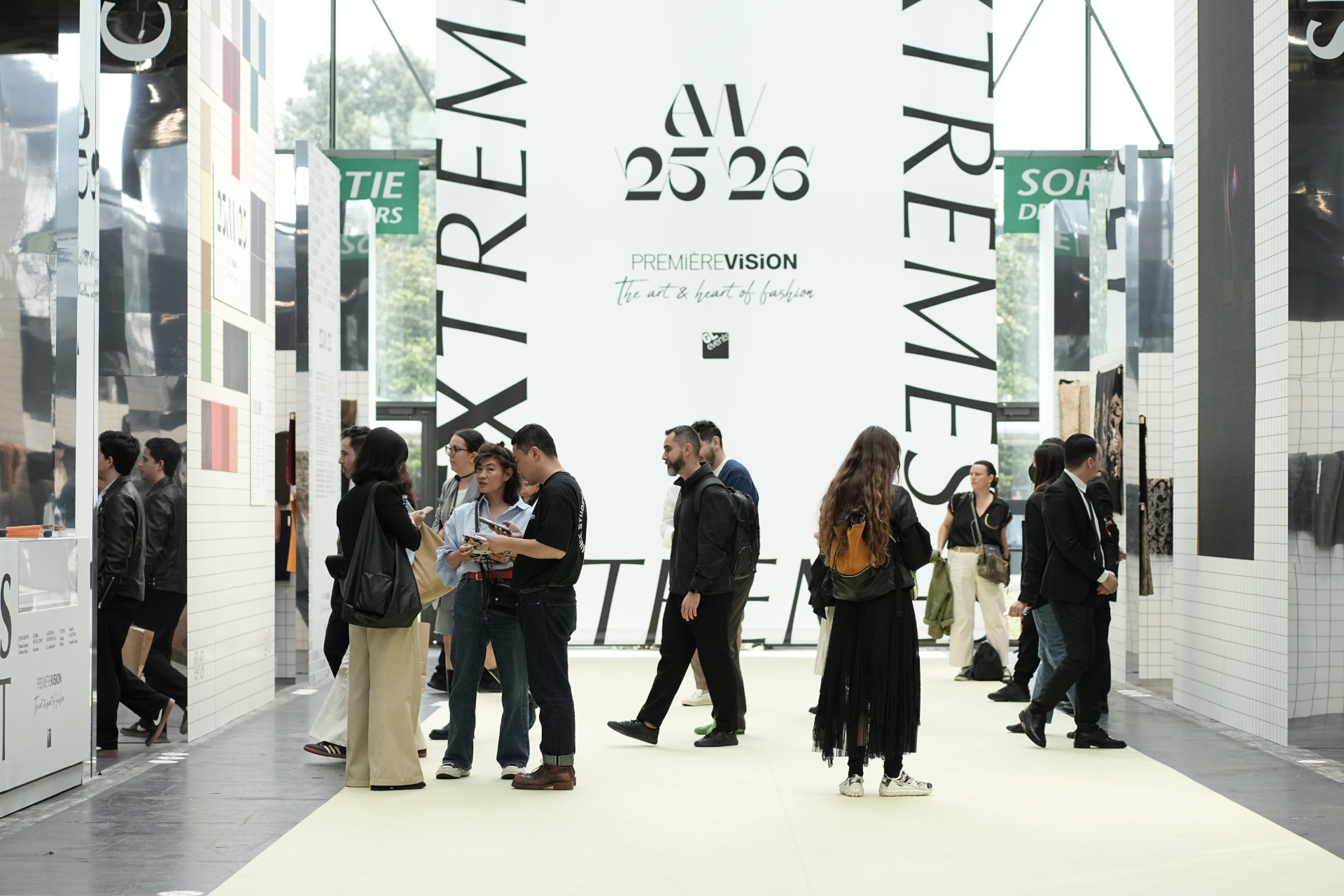
The explosion of articles and conversations on AI has been exponential, (have a look at The Interline’s AI report to get clear guidance and deep insights), as human creativity is challenged, and its role in the art world is raising issues on the AI generated products and their legal protection, credits and responsibility.
Instead of rehearsing these discussions and arguments, this talk instead focused on how, where, and why AI is being deployed in fashion – and especially on understanding which areas of the industry are the most likely to be impacted or reshaped by AI in the near future.
Paul Mouginot, Scientific Advisor to the FHCM (Fédération de la Haute Couture et de la Mode) began the panel by proposing an enlightening way to define and categorise AI. Describing it as “a new way to interact with machines,”Paul divided the uses of AI into 3 main categories:
- Segmentation of large volumes of data based on complex criteria (collection benchmarking, recognition of defects in fabric, categorisation of product images and more)
- prediction (predictive algorithms deployed in service of creating new insights across pricing, demand, competition and more)
- generation (generative AI, transformers, GAN’s)
The latter, Generative AI is, as the headlines show, exponentially growing (at least in terms of new applications and services)and, as Seda Domanic from Refabric explained, has the potential to change multiple different elements of the traditional workflow, saving waste, time and cutting costs – through the precise measuring of the interest for a product before launching its production, but also in enabling 2D images (and soon 3D renderings) directly from the design idea without the intermediary steps of digital product creation. And AI can further enhance the velocity of the design process by linking into production patterns, and helping marketing and merchandising teams, by allowing them to create photoshoots and lookbooks way faster and way cheaper.
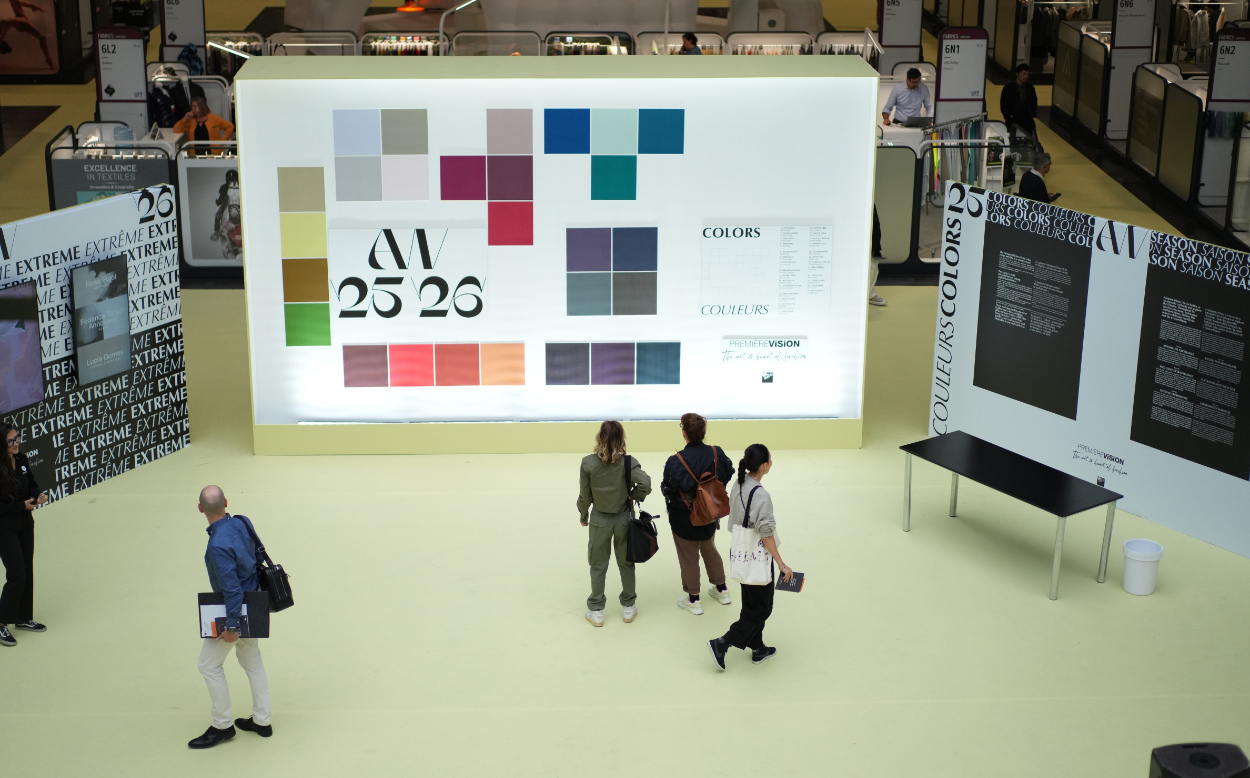
This potential, though, will be reliant on how AI is personalised, fine-tuned, and fed with brand-specific data, with Nima Abbasi, Partner at Maison Meta spotlighting his company’s work with designer Norma Kamali, and what it means for the wider fashion industry to better understand, explore, and build a contextual model for how AI works and what it can (and cannot) accomplish – all of which will shape a future where AI becomes not just an uncharted possibility space, but a solution… one that is as capable as the person using it.
Fashion and innovation: the future of the pairing
As exciting as the possibilities of technology and fashion, combined, are, it remains important to reflect and decide on the real use of these technologies. In times where no one can deny the urge for real action of reducing the environmental and social footprint of the fashion industry, how can tech and AI help in bringing awareness, adding well-being, preventing harm? And how can fashion (and other industries) counterbalance this against the deep energy needs of generative AI and other tools, which are unlikely to change barring any radical overhauls of chip architecture?
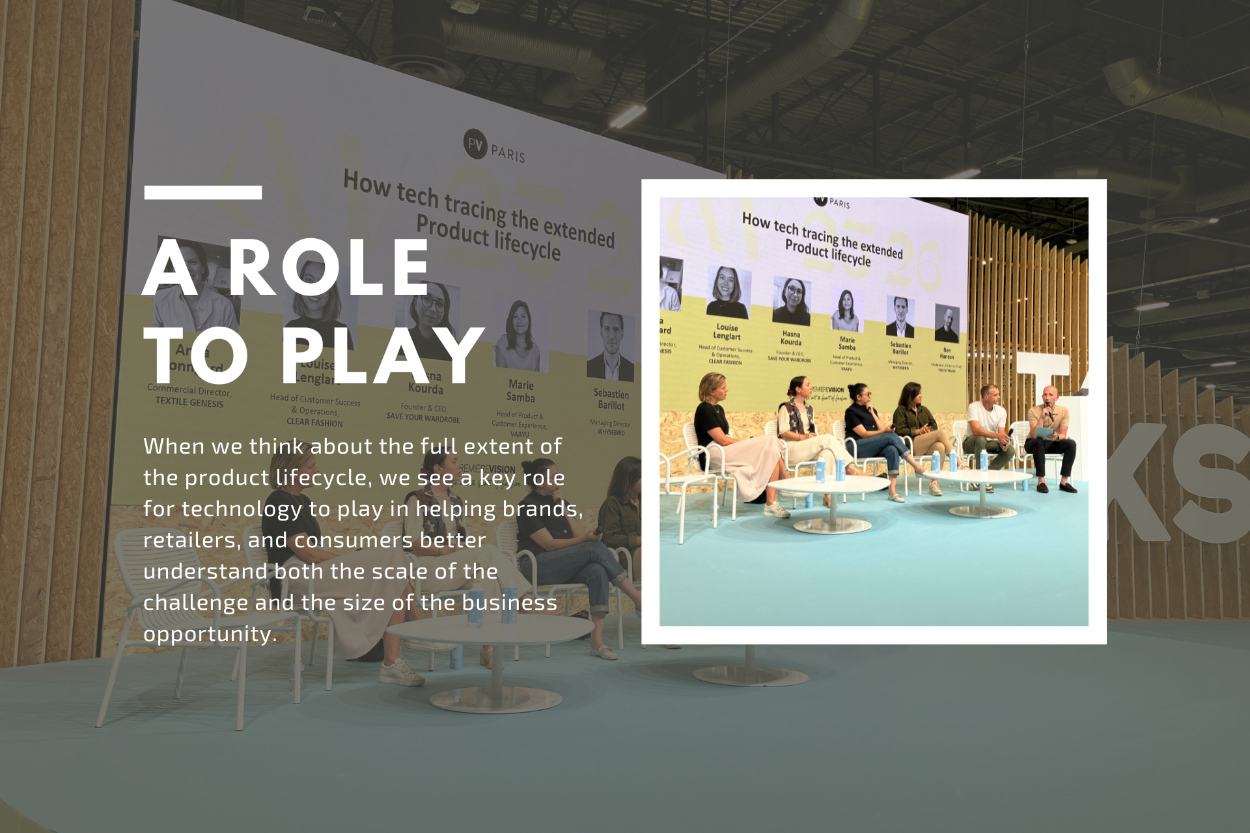
After leaving Première Vision this season, I was struck both by the changes at the forefront of software and hardware – from 3D to material innovation and recycling – and by the ongoing drive for fashion to continue to evolve in a way that puts the industry in harmony with the planet. How can we start to use generative AI, for example, in a similar way to the healthcare and pharmaceutical industries to develop new pigments, new enzymes for recycling, and other chemical leaps forwards? How can we really begin to diversify raw materials and support biofabrication? How can we take action on the industry’s need for growth at the same time as finding a balance with what the planet can sustain?
There are so many vital questions for fashion to answer, but based on this season’s show I believe there’s reason for optimism that technology will play a key role in uncovering those answers – providing it’s used in a way that continues to value both nature and the essential spark of human creation.
